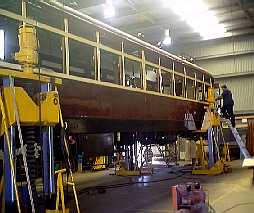
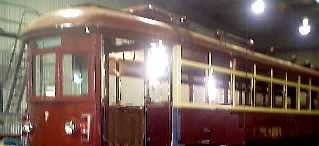
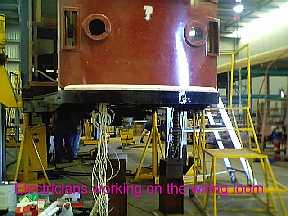
click photos for full size
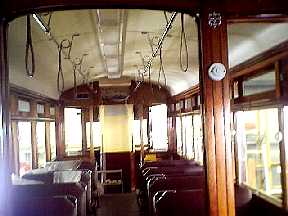
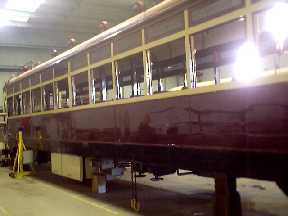
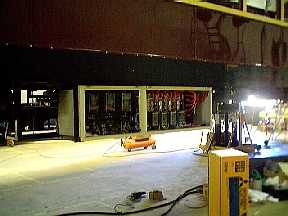
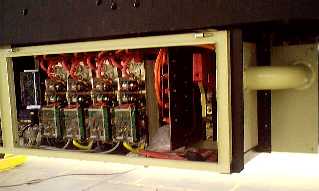
|
A project
costing 5 million Australian dollars is near to completing its first
stage. H type tram 380 (formerly 359) is nearing completion of its
renovation. This is the first of five trams to be renovated by private
enterprise, the first time such a contract has been undertaken. Previously
all work of this type was completed by Trans Adelaide and prior to that
the State Transport Authority, the Municipal Tramways Trust and the South
Australian Railways.
The main contractor
in this enterprise is All Transport Industries owned by Rocc Giglio, with
specialist work provided by Electronic Enterprises Australia LTD, for the
chopper unit, and Allied Engineering Pty LTD for refurbishment of the
trucks and other heavy engineering work. The main emphasis has been to
maintain the original appearance of the trams, but to introduce new
technology as much as possible. The driver's cab has a new fiberglass
front, reinforced with box steel section; this is contained within the
fiberglass and hidden from view. Air conditioning has also been included
for the driver's comfort. The original General Electric PC5L2 controls
have been reinstated, but in fact are replaced by a locally designed
chopper unit. This electronic unit is designed to reduce brake block wear,
improve braking performance, and to reduce damage to motors from notching
up too quickly, and emergency braking. The existing PC5L2 CASING has been
stripped of its fingers and replaced with electronic circuitry. The heart
of the unit is contained in an under floor, sealed, air conditioned
casing.
The frame of the tram
itself has had several changes made. The door operating systems are now of
a 'smart door' system, provided by SMC Pneumatics which opens the door
automatically if someone becomes trapped in them. The corner posts are now
constructed in box steel, replacing the old blackwood timber. Roof
construction has been upgraded to include a fiberglass coating. Tinted
glass has been refitted to all windows, with gas struts included in the
vertical sliding sash windows to aid in their operation. Fluro lighting
has been added to the centre ceiling, and new buzzer buttons and stopping
signal signs.
Other improvements
include extra pins inserted each side of the couplers as part of the
chopper unit upgrade, air piping has been replaced in copper, with
flexible hoses to couplers and compressor tanks, and new air tanks have
been fitted. Most of the new wiring runs under the floor unit in flexible
conduit instead of in the window trunking, and improved sanding gear has
been fitted. The driver also has a new seat of a type borrowed from the
defence industry.
(The majority of the
technical information in this summary has been provided from an article by
Kym Smith, a local tram buff, who is a the moment working with myself in
Adelaide, but is soon to been heading a department in the Bendigo Tram
Museum, maintenance division. I wish him the very best of luck in his new
venture). |

